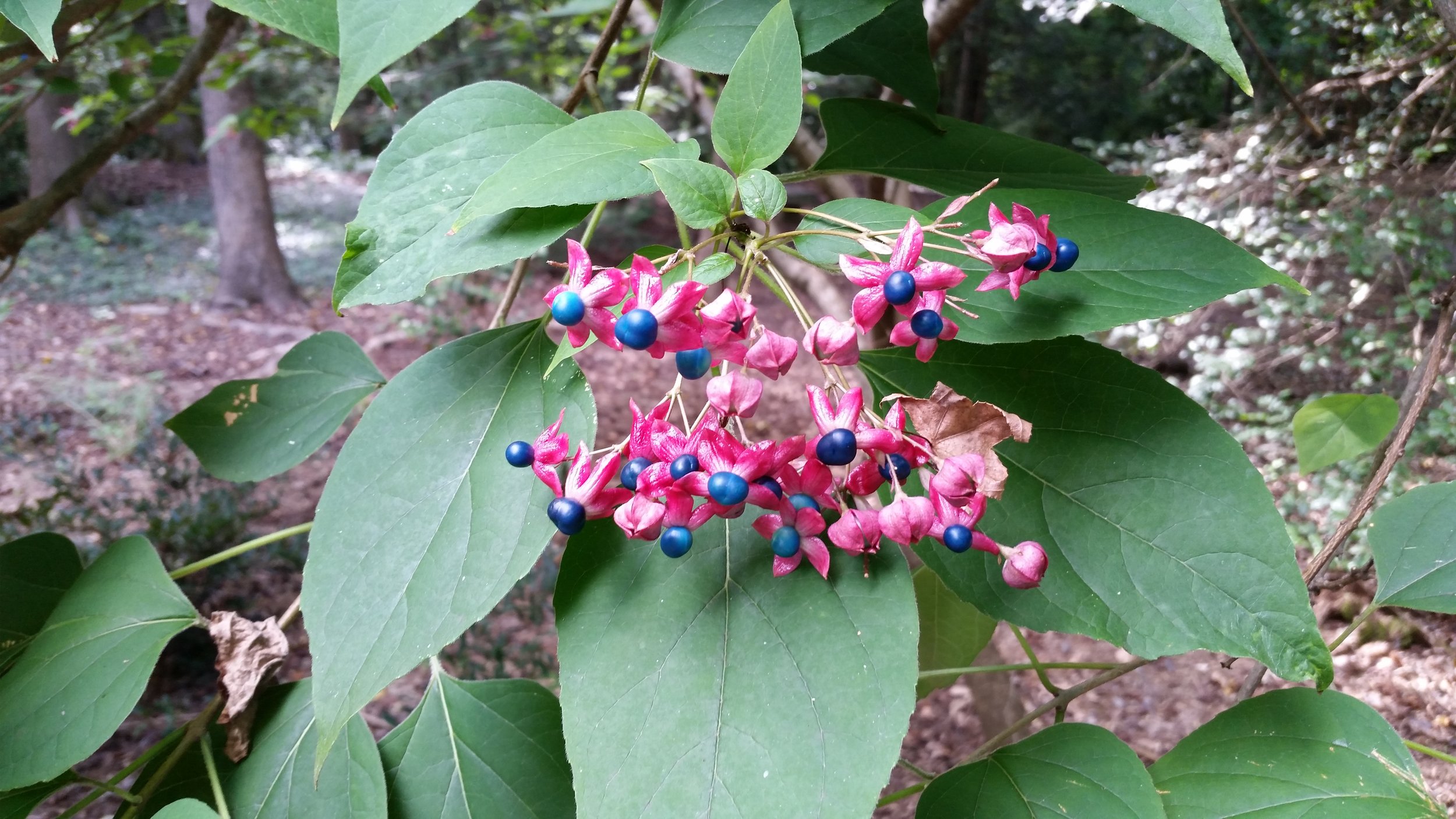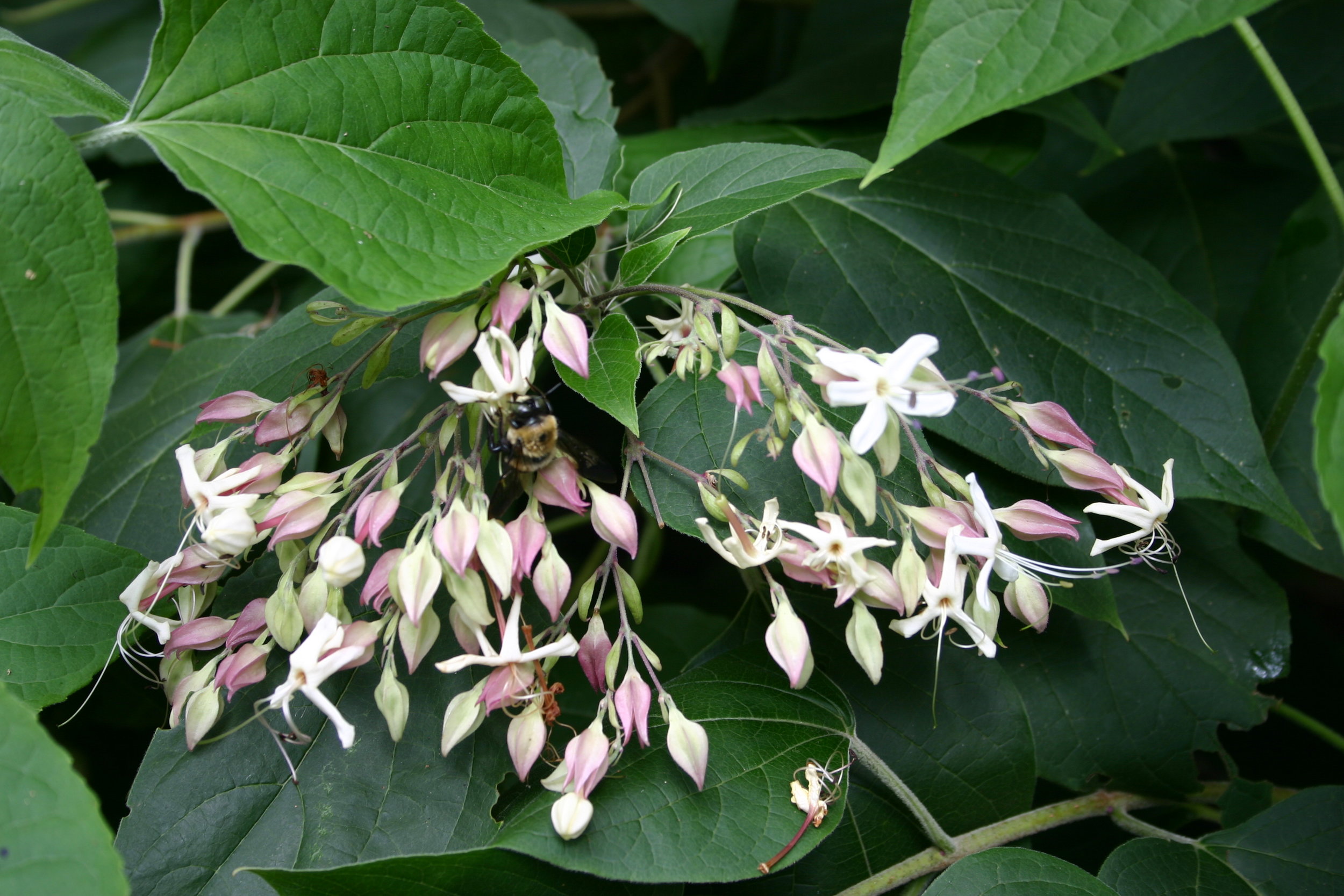Clerodendrum trichotomum (pronounced kler-o-DEN-drum trik-o-TO-mum), more commonly known as “Harlequin Glorybower” or “Peanut Butter tree” is considered invasive in some states. It is prone to whiteflies and aphids, and may be troubled with leafspots. It suckers readily. Birds spread the seeds far and wide. The short tree or multistemmed shrub has a loose structure and an unkempt appearance. I grow it anyway.
Why grow something that has multiple issues? Fragrant white flowers appear in summer. When the bloom petals fall, the calyxes remain behind and turn a deep rose. The round seeds are an eye-catching metallic blue. Crushed leaves smell like peanut butter, providing entertainment for young garden visitors. This small tree survives in dry shade but will flower better and have more berries in sun. These benefits outweigh the trouble of pulling out seedlings or cutting off suckers that rise from roots. The species cannot pollinate itself, so if berries are desired, add a second plant from different parents.
I think Clerodendrums look best when trained to a single-trunk form. The tallest ones in the Mary Snoddy garden are just under eleven feet. There is a cultivar with variegated leaves, but the leaf coloration tends toward green with only a touch of white, which makes it look more like a sick plant than a variegated one. Clerodendrum trichotomum has a cousin, Clerodendrum bungei with a similar appearance but smells like over-scented soap. The common name is “Cashmere Bouquet.”
Harlequin Glorybowers are tolerant but, like most other plants, they look best in moist, fertile soil. They are cold hardy in Zones 7-10. The shrub/tree loses every leaf after frost in my zone 7B garden. Its bright seed display fills a flower void in the garden between Crape Myrtles and Sasanqua Camellias, which makes it an autumn standout.

